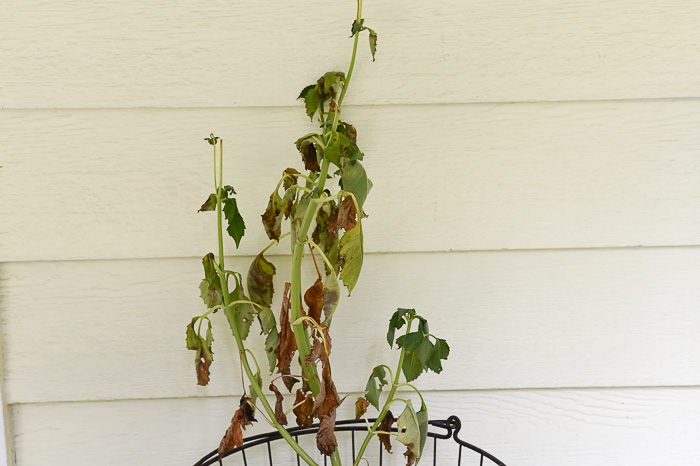Prevent These Plants: What Plants Don't Like Epsom Salt
Prevent These Plants: What Plants Don't Like Epsom Salt
Blog Article
Explore Why Some Plants Reject Epsom Salt as a Nutrient Resource
In the elaborate globe of plant nutrition, the rejection of Epsom salt as a sensible nutrient resource by some plants presents an interesting quandary. The factors behind this discerning habits dig into a complicated interaction of plant absorption systems, the distinct chemical framework of Epsom salt, and plant-specific nutrient preferences.
Plant Absorption Systems
In delving into the elaborate world of plant absorption mechanisms, it comes to be obvious that the process is regulated by an innovative interplay of physical dynamics and molecular paths. Plants take in nutrients mostly via their origins, making use of various transportation systems to uptake essential aspects such as nitrogen, phosphorus, potassium, and magnesium. Magnesium, a crucial component in chlorophyll synthesis and enzyme activation, plays a crucial role in plant development and growth.
The absorption of magnesium involves several actions, starting with its availability in the soil service. When dissolved, magnesium ions are taken up by plant origins with particular transport proteins embedded in the cell membranes. These proteins facilitate the activity of magnesium across the root cell walls and right into the plant's vascular system, where it is after that dispersed to various tissues to support various physiological functions.
Understanding the elaborate devices behind magnesium absorption in plants loses light on how this necessary nutrient adds to total plant wellness and productivity. By enhancing magnesium uptake paths, cultivators can improve crop yields and quality, highlighting the relevance of comprehending plant absorption dynamics for sustainable agriculture methods.
Epsom Salt Chemical Structure
The chemical structure of Epsom salt, likewise referred to as magnesium sulfate heptahydrate, reveals a distinctive plan of aspects that add to its special buildings and applications - what plants don't like epsom salt. Epsom salt is composed of magnesium (Mg), sulfur (S), oxygen (O), and hydrogen (H) atoms. The formula MgSO4 · 7H2O suggests that each molecule contains one magnesium atom, one sulfur atom, 4 oxygen atoms, and 14 hydrogen atoms. The presence of water particles in its structure adds to its solubility in water. The 7 water molecules are loosely bonded to the magnesium sulfate compound, enabling it to liquify quickly in water and be conveniently taken up by plants with their origins.
The crystal framework of Epsom salt develops monoclinic prisms, which are elongated crystals with identical ends. This crystal shape affects the physical buildings of Epsom salt, such as its appearance and solubility. Recognizing the chemical framework of Epsom salt is vital for comprehending its actions as a nutrient resource and its communications with plants in farming and gardening techniques.
Plant-Specific Nutrient Preferences
Plants exhibit distinctive choices for specific nutrients, highlighting the value of recognizing their private demands for optimal development and development. These preferences are determined by various aspects, including the plant varieties, phase of development, ecological conditions, and soil structure. Some plants might grow in nitrogen-rich soils, while others call for even more phosphorus or potassium for healthy and balanced development. Comprehending these plant-specific nutrient choices is crucial for optimizing crop returns, enhancing ornamental plant growth, and advertising general plant health - what plants don't like epsom salt.

Plant-specific nutrient choices can likewise differ based on whether the plant is a monocot or dicot. Monocots, such as lilies and lawns, have different nutrient needs compared to dicots like roses and tomatoes. Additionally, certain plants might show details shortages or toxicities when exposed to insufficient or excess levels of specific nutrients. By tailoring nutrient supplementation to satisfy the specific requirements of each plant species, growers can optimize plant development, reduce nutrient waste, and support sustainable farming practices.

Dirt Ph and Nutrient Uptake
Soil pH plays a crucial role in figuring out the availability of important nutrients for plant uptake. Acidic dirts with a reduced pH are beneficial for plants like blueberries and azaleas, while alkaline dirts with a greater pH match plants such as lavenders and clematis.
Dirt pH affects this hyperlink the chemical forms of nutrients in the soil. In acidic soils, nutrients like iron, light weight about his aluminum, and manganese can come to be a lot more offered, however extreme level of acidity can lead to poisoning issues. On the various other hand, alkaline dirts might limit the accessibility of nutrients like copper, iron, and zinc, impacting plant development. Keeping the suitable pH level in the soil is crucial for ensuring that plants can effectively uptake the necessary nutrients for their healthy and balanced development and performance.
Hereditary Factors in Nutrient Uptake
In the world of plant nourishment, the interplay of hereditary variables significantly affects the uptake of essential nutrients essential for plant development and development. Hereditary aspects play a pivotal function in forming a plant's capability to take in and make use of nutrients effectively. Variants in genetics can impact the expression of transport healthy proteins in charge of moving nutrients throughout cell membranes. These transportation proteins, such as networks and service providers, are inscribed by specific genes that can vary amongst plant varieties and even within the same types.
Moreover, genetic variables also determine the effectiveness of nutrient uptake systems within plants. For example, some plants may have hereditary attributes that enhance their capability to scavenge nutrients from the dirt efficiently, providing them an affordable advantage in nutrient-poor settings. On the other hand, hereditary variants can likewise result in restrictions in nutrient uptake, making sure plants extra prone to shortages even when nutrients are plentiful in the soil.
Understanding exactly how hereditary aspects affect nutrient uptake is crucial for developing strategies to optimize plant nourishment and enhance crop efficiency in different farming setups. By deciphering the genetic systems associated with nutrient uptake, scientists can work in the direction of creating genetically improved plant varieties with boosted nutrient purchase capabilities.
Final Thought

In the elaborate globe of plant nourishment, the being rejected of Epsom salt as a feasible nutrient resource by some plants postures an interesting conundrum. what plants don't like epsom salt. Understanding these plant-specific nutrient preferences is important for making the most of crop yields, boosting ornamental plant growth, and promoting overall plant health and wellness
By tailoring nutrient supplements to meet the exact needs of each plant types, cultivators can maximize plant development, lessen nutrition waste, and assistance lasting farming methods.
In the world of plant nourishment, the interaction of hereditary variables dramatically affects the uptake of necessary nutrients essential for plant growth and development. Understanding these complexities in plant nutrient uptake is critical for optimizing plant growth and wellness in agricultural practices.
Report this page